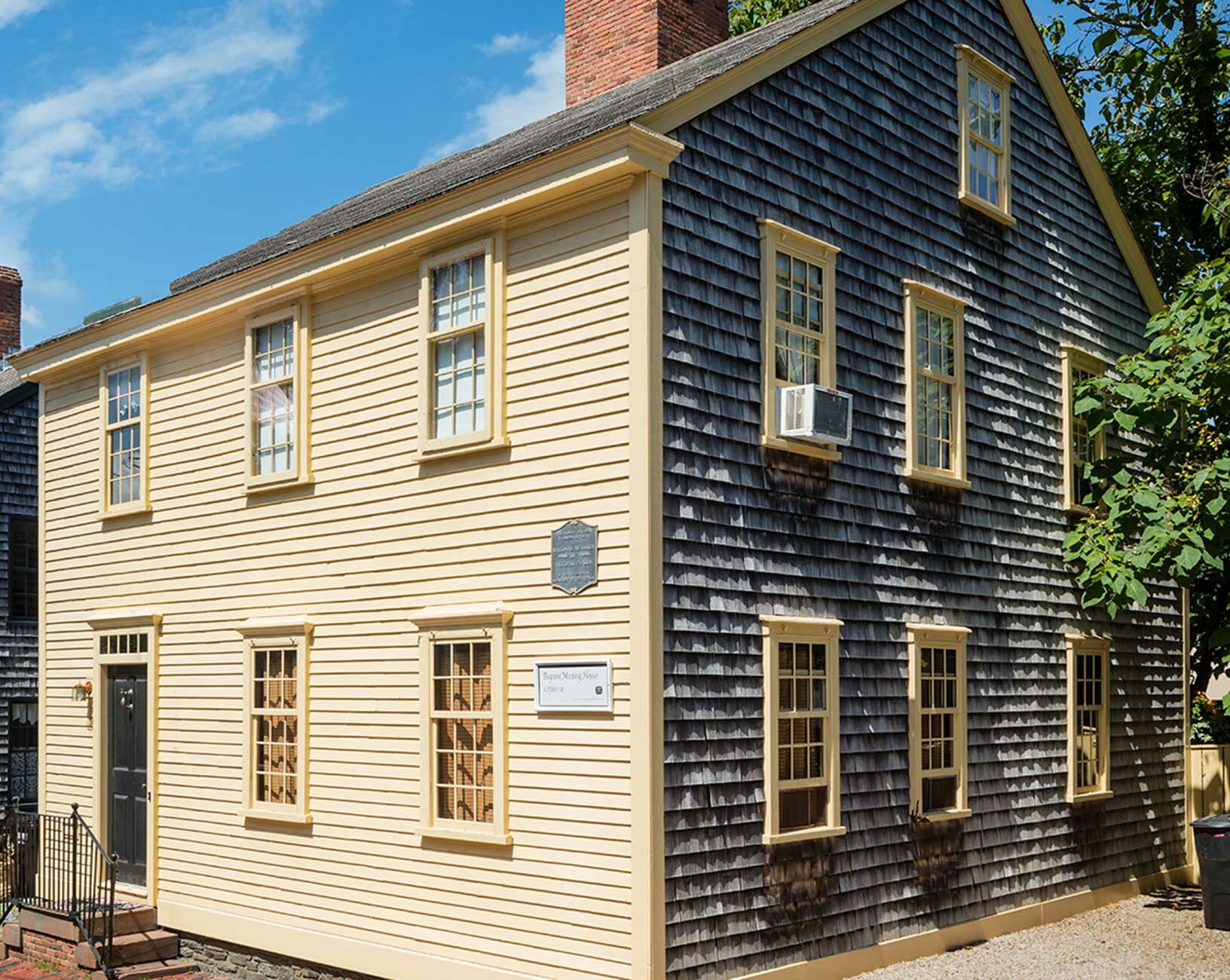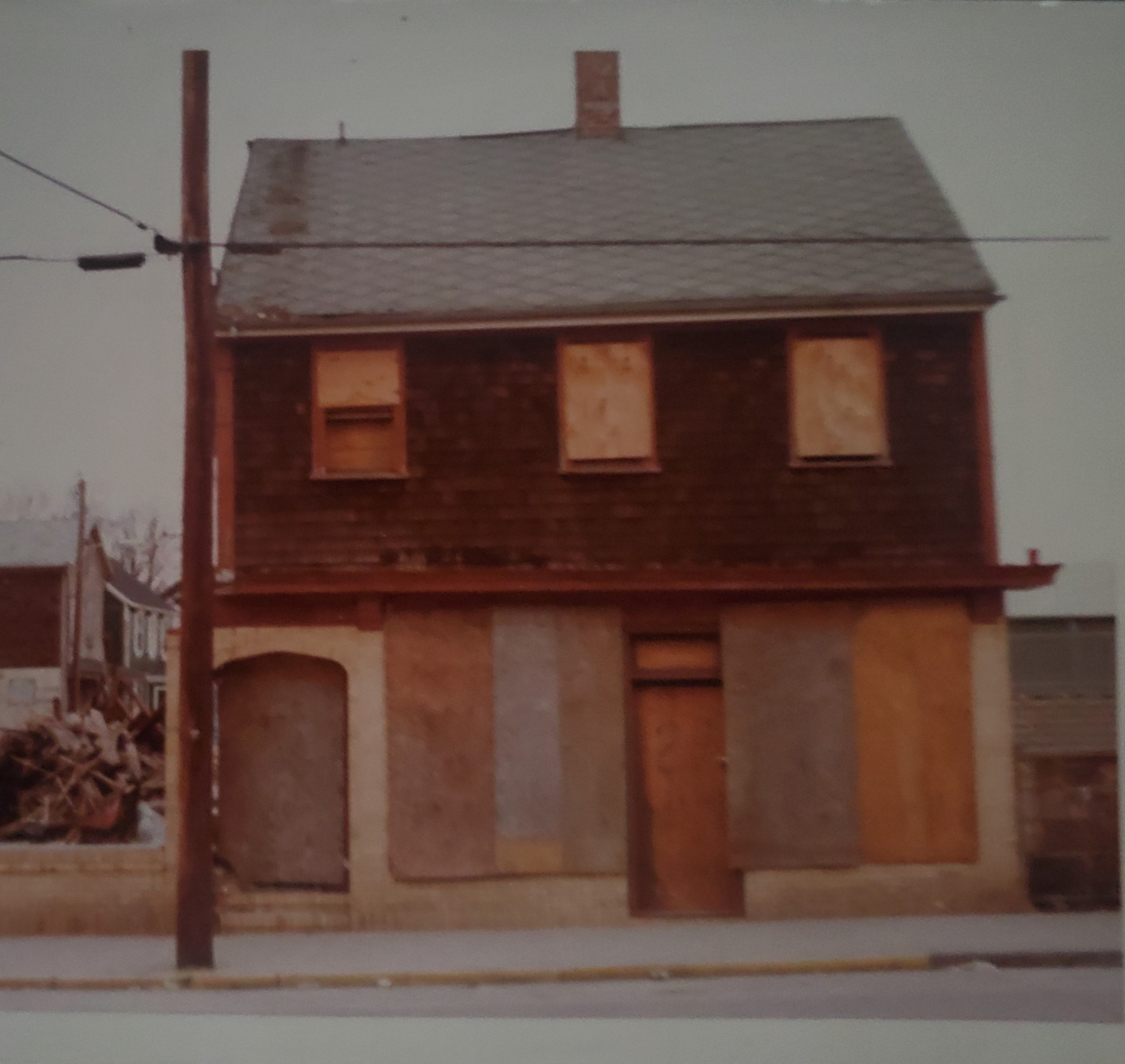Architectural story:
The house now at 18 Dennison Street was originally a two-story, one-room structure with a partial second floor level. There were likely four major building phases: the first phase was a two-story, one-room structure; a bay was added to the frame on the first floor and covered with a saltbox-style roof during the second phase (ca.1710); the dwelling expanded to two full floors and a gable roof during the mid-18th century, and the final phase at the end of the 18th century included an ell addition to the rear of the building.
Restoration story:
When NRF bought the building in 1974, the intent was for it to be restored to the early meetinghouse configuration and moved to the burying ground near Edward Street. Because the location was not feasible, the building was reassembled on Dennison Street. Restoration took place in 1975 and restored the building to its mid-eighteenth century configuration.
The disassembly process gave us important insight into the evolution of the structure and more clues as to the original function and use of the building.
People story:
Records of the Baptist Church show that a meeting house was built in 1707 on Tanner Street (later West Broadway, now Dr. Marcus Wheatland Boulevard). While it is not known for certain, it is likely the building became a residence sometime in the mid-18th century. More research to uncover the history of this house on West Broadway needs to be undertaken. West Broadway was an important center for African-heritage Newporters in the 19th and 20th centuries.
The 19th-century built environment of Newport would not exist without the work of Irish immigrants. The Ronayne family, immigrants from Ireland, began to buy property along Dennison Street in the 1870s, including the lot that this building now sits.
While Irish immigrants in Newport played an important role in several industries—many worked as brick layers, stone masons, builders, and teamsters.
Families like the Maguires, Ronaynes, O’Learys, Currans, Carneys, and Caffertys (all who lived on Dennison Street) were an important part of creating and maintaining the city’s infrastructure, including transportation systems that helped people move around the city.
For more on the story:
Visit Gilded Age in Color to learn more about the West Broadway Community.



